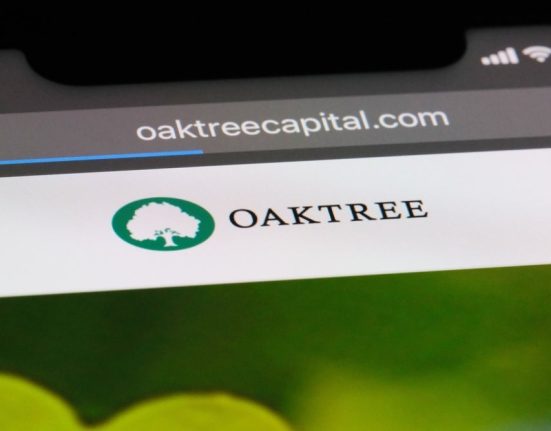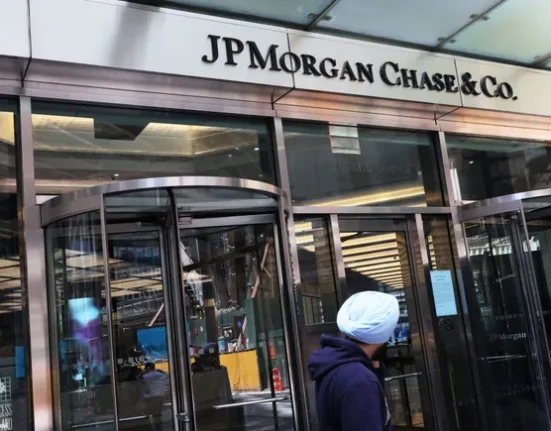Editorial Note: We earn a commission from partner links on Forbes Advisor. Commissions do not affect our editors’ opinions or evaluations.
30-year fixed refinance mortgage rates didn’t budge at 6.61% today, according to the Mortgage Research Center. Rates averaged 5.52% for a 15-year financed mortgage and 6.38% for a 20-year financed mortgage.
Related: Compare Current Refinance Rates
30-Year Refinance Rates Climb 0.53%
The current 30-year, fixed-rate mortgage refinance average rate stands at 6.61%, compared to 6.57% last week.
The annual percentage rate (APR) on a 30-year, fixed-rate mortgage is 6.63%, higher than last week’s 6.6%. The APR is the all-in cost of a home loan—the interest rate including any fees or extra costs.
At the current interest rate, borrowers with a 30-year, fixed-rate mortgage of $100,000 will pay $639 per month for principal and interest, according to the Forbes Advisor mortgage calculator. That doesn’t include taxes and fees. Over the life of the loan, the borrower will pay total interest costs of about $130,679.
20-Year Refinance Rates Climb 0.68%
For a 20-year fixed refinance mortgage, the average interest rate is currently 6.38%, compared to 6.33% last week.
The APR, or annual percentage rate, on a 20-year fixed mortgage is 6.41%. It was 6.37% last week.
At today’s interest rate, a 20-year, fixed-rate mortgage refinance of $100,000 would cost $738 per month in principal and interest – not including taxes and fees. That would equal about $77,710 in total interest over the life of the loan.
15-Year Mortgage Refinance Rates Climb 0.49%
For a 15-year fixed refinance mortgage, the average interest rate is currently 5.52%. A week ago, the 15-year fixed-rate mortgage stood at 5.49%.
The APR, or annual percentage rate, on a 15-year fixed mortgage is 5.56%. Last week, it was 5.53%.
Based on the current interest rate, a 15-year, fixed-rate mortgage refinance of $100,000 would cost $818 per month in principal and interest—not including taxes and fees. That would equal about $47,639 in total interest over the life of the loan.
30-Year Jumbo Refinance Rates Climb 0.43%
The average interest rate for a 30-year, fixed-rate jumbo mortgage refinance (a loan above the federal conforming loan limit of $806,500 in most places) jumped up week-over-week to 6.74%, versus 6.71% last week.
At today’s interest rate on a 30-year, fixed-rate jumbo mortgage refinance, a borrower would pay $648 per month in principal and interest on a $100,000 loan.
15-Year Jumbo Refi Rates Climb 0.68%
A 15-year, fixed-rate jumbo mortgage refinance is 5.94% on average, up 0.68% from last week.
At today’s interest rate, a borrower with a 15-year, fixed-rate jumbo refinance would pay $841 per month in principal and interest per $100,000 borrowed. Over the life of the loan, that borrower would pay around $51,574 in total interest.
Are Refinance Rates and Mortgage Rates the Same?
Refinance rates are different from mortgage rates and tend to be slightly higher. The rate difference can vary by program and is something to consider as you compare the best mortgage refinance lenders.
In addition to having different refinance rates for conventional, FHA, VA and jumbo applications, cash-out refinance rates are higher as you’re borrowing from your available equity.
Rates for government-backed loan programs such as FHA and VA mortgage refinances can be lower than a conventional or jumbo refinance, as there is less risk for lenders. Still, you should compare your estimated loan’s annual percentage rate (APR), which includes all additional fees and determines the interest charges.
When considering a mortgage refinance, compare your current interest rate, mortgage balance and loan term with the new interest rate and term. This comparison helps you estimate your new monthly payment and savings, making it easier to determine if refinancing is the right choice.
When You Should Refinance Your Home
There are lots of good reasons to refinance your mortgage, but for most homeowners, it comes down to lowering the interest rate, reducing monthly payments or paying off the loan more quickly. Refinancing can also allow you to tap some of your home’s equity or eliminate private mortgage insurance (PMI).
It’s important to keep in mind that refinancing carries costs, and for that reason makes more sense if you plan to stay in your home for some time. It can be helpful to calculate the “break-even point” for a potential refinance – to see how long it will take for savings from the new mortgage to outweigh closing costs. Try to find out what those fees will be and divide them by the monthly savings from the new mortgage.
Check out our mortgage refinance calculator to help you decide if this is a good time to refinance.
How To Qualify for Today’s Best Refinance Rates
Much like when you shopped for a mortgage when purchasing your home, when you refinance here’s how you can find the lowest refinance rate:
- Maintain a good credit score
- Consider a shorter-term loan
- Lower your debt-to-income ratio
- Monitor mortgage rates
A solid credit score isn’t a guarantee that you’ll get your refinance approved or score the lowest rate, but it could make your path easier. Mortgage refinance lenders are also more likely to approve you if you don’t have excessive monthly debt. You also should keep an eye on mortgage rates for various loan terms. They fluctuate frequently, and loans that need to be paid off sooner tend to charge lower interest rates.
Trends in Refinance Rates for 2025
National average mortgage interest rates will have the most significant impact on refinancing trends throughout 2025, whether they rise or fall.
While predicting mortgage interest rates is challenging, experts expect them to remain in the middle-to-high 6% range during the first half of 2025, similar to the final quarter of 2024. However, rates could potentially decrease by the end of the year.
If inflation slows and national unemployment levels remain steady or increase, the Federal Reserve might cut the federal funds rate, leading to lower mortgage rates. On the other hand, if the opposite happens, average rates will likely see little movement.
Since experts anticipate minimal movement in average mortgage rates during the first half of the year, those looking to refinance at a lower rate may want to wait until later in the year to secure the best rate. In the meantime, improving your credit score, making on-time payments and paying down your loan amount will put you in the best position to secure a low rate when you begin shopping for a refinance offer.
Frequently Asked Questions (FAQs)
How quickly can you refinance a mortgage?
Many lenders refinance your mortgage in about 45 to 60 days, but it depends on the type of mortgage you choose and other factors. Ask your lender what their time frame is before you borrow to make sure it’s right for you.
How do you find the best refinancing lender?
You should always shop around when you’re trying to get a new mortgage or refinance an existing one. Take a look at the best mortgage refinance lenders as a starting point and try applying online. Always find out the closing costs each lender will charge, and make sure you’re able to communicate well with the lender you want to choose. In a bumpy housing market, you’ll probably be in touch with the lender more often than you realize.
How soon can you refinance a mortgage?
In many cases, you can refinance a mortgage as soon as six months after you start paying it down, although some lenders insist that you wait 12 months. You should ask your lender to be sure.







